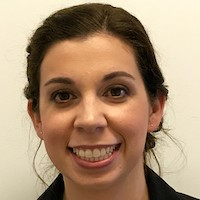Therapeutic potential of extracellular vesicles
Cell & Gene Therapy Insights 2021; 7(12), 1713–1723
10.18609/cgti.2021.266
A panel of experts from Corning Life Sciences took part in a podcast with Cell & Gene Therapy Insights to discuss extracellular vesicles (EV's). What are they, what their therapeutic potential is, and what is currently occurring at research and pre-clinical levels? Here, we summarize some of their key thoughts from the discussion.
You can listen to the podcast at the bottom of this page or read the interview below.
 |  |  |  |
Roisin McGuigan, Editor, Bioinsights, speaks to (from left to right): Amy Kauffman, Senior Development Engineer of Biomaterials, Corning Life Sciences; Pei-Chen Chiang, Senior Research Scientist at Corning Life Sciences Asia Technology Centre; Linda Hsu, Senior Research Scientist at Corning Life Sciences Asia Technology Centre; and Samantha Haller, Research Scientist at Corning’s European Technology Centre.
Q Let’s begin with an overview of extracellular vesicles (EVs). What are they, and what do they potentially bring to the table for the advanced therapies field?
AK: The way I like to describe EVs to folks who may not be familiar with them is that they are like the ‘text messages’ of cells. They are small nanoparticles with lipid membranes that are naturally released by cells, and they are used to communicate with one another.
Inside of these nanoparticles, there is genetic information, sugars and proteins, that are like the texts that one cell sends to the other and are read in order to elicit a response. They come from both healthy cells and diseased cells. What is interesting is that we are at a point where this field is still emerging, and we are still learning all of the things that EVs are being used for, besides just communicating.
When we think about what they can bring to the table for advanced therapies, something that is on the horizon is the idea of acellular therapies – ways we can use cellular products to help make therapies without having to deliver an entire cell.
You can imagine trying to receive a text message as opposed to a whole phone. It’s a lot easier to have that same message in a tiny little package that you can give and hopefully get a healthy response.
They may have a lot of advantages compared to whole stem cell therapies for regenerative medicine, because they are small, stealthy, and already naturally derived from the cells. They contain the same therapeutics as the parent cell they came from. They are also able to cross many tissue barriers, like the blood-brain barrier, which is one of the most difficult things to penetrate when it comes to therapeutics.
In addition, they cannot replicate. When you try to deliver stem cells or foreign cells to a new body, there is always the potential that they can propagate tumors or even bring with them viral pathogens. EVs are emerging and opening the door for other types of therapies that traditionally clinicians may not have thought of before.
Q This modality is certainly showing strong growth currently. What are the specific applications that are driving this, and what does the data so far tell us?
PC: As Amy said, regeneration from stem cell-derived EVs could presumably prevent implantation rejection side effects, but still maintain the growth stimulation ability, just like the stem cell itself.
Right now, there is a popular therapy called platelet-rich plasma (PRP) therapy, which uses injections of concentrations of the patient’s own platelets to accelerate healing of injured tendons, ligaments, muscles or joints. In this way, PRP uses each individual patient’s own healing system to improve musculoskeletal problems. Now, based on research, we believe it’s actually the EV-enriched plasma that is the cause of this healing.
In terms of the impact on disease treatment, such as COVID or chronic infection, research on stem cell-derived EVs is showing they may perform better than steroids at decreasing inflammation. This immunomodulation ability from stem cell-derived EVs could go beyond our imagination. We believe these two popular areas of regenerative medicine and infectious diseases will be very important driving forces.
There are only a few clinical trials that have directly applied EVs so far, but things look promising with the current early phase trials. Especially for COVID treatment, if we look at the clinical trials right now, we can see probably over 10 very promising results. However, we have to remember that the heterogeneity of EVs makes efficacy evaluation more complicated.
Q In your view, what are some of the important best practices when working with EVs in the lab across the various application areas?
LH: The workflow of the clinical translation in the lab is from EV production to isolation, identification, and engineering. In EV production, host cell selection and culture conditions are critical. The parent cell needs to be selected based on the activity and tissue-homing property of EVs, and on potential immunogenetic and oncogenic considerations.
The suggested culture method includes multi-layer culture flasks, bioreactors, and so on. The main purpose of this stage is to provide a suitable environment for a parent cell that can efficiently produce good quality EVs. In terms of good quality EVs, like Amy and Pei-Chen have mentioned, the population of EVs covers diverse sub-populations that can differ in size, biology, composition, or even in their biogenetic mechanism.
We need criteria to determine the identity and purity of EVs. In 2014, the International Society of Extracellular Vesicles (ISEV) considered the most fundamental characteristics that should be evaluated when working with EVs, such as the size of an exosome, which is between 30 and 150 nanometers in diameter, and a microvesicle, which is 100 to 1,000 nanometers.
In addition, the morphology of the EV needs to present a lipid bilayer structure, and express a panel of generic of markers such as CD9, CD81, CD63 and TSG101, etcetera, that are defined by ISEV to indicate there is EV in a sample.
When it comes to EV isolation, normally EVs are isolated from cell culture media. The whole isolation and purification process cover at least two or three steps. Currently, isolating the EVs by ultra-centrifugation and purifying them through differential centrifugation based on particle size – is the most widely used method, because it needs no specific reagent. The main drawback is that it takes a lot of time to achieve enough EVs for tissue regeneration, considering the dose of EV used is 1 million to 10 billion vesicles per target animal.
Recently some studies have suggested that ultra-filtration with size exclusion chromatography works to get high yield and purity of EV. So, depending on what properties and purities of EV that we want, we need to combine and optimize some of the existing methods for both isolation and purification.
The downstream of the clinical implementation includes the drug loading and pharmacokinetics that evaluate how to target and transfer EV to the target cell, and the safety profile to determine optimal clinical dosage and possible toxicity on repeated administration.
Although there are many well established procedures and concepts from classic biogenetics and the cell therapy fields that can be used in EV work, more comprehensive evaluations are required to move forward.
SH: I want to emphasize the fact that as Linda said, EVs are heterogenous, and the quality of the EV really depends on the quality of the cells.
In order to have constant quality and avoid lot-to-lot variability, there need to be constant and standardized cell culture methods, meaning the environment, and the media, needs to be fully defined and identical.
Q Many former mesenchymal stem cell (MSC) players are now transitioning to EVs. What are some of the key considerations and challenges for them when doing so?
SH: MSCs are the most accessible multi-potent stem cells, and these cells can be obtained from various tissues. These cells are mainly used in stem cell therapy clinical trials right now.
In some trials they have shown really promising results, especially for wound healing, for example. But studies have shown that the key therapeutic effects in these therapies are not really caused by the stem cells themselves, but by the secretions from these MSCs, which are the EVs or exosomes.
In various models, these EVs have a similar or even better therapeutic capacity compared to their parental cells. As we have discussed, EVs have advantages compared to stem cells: they are non-immunogenic, they can bypass the blood–brain barrier, and another point to consider is their tropisms. The tropisms of the EVs will depend on the parental cells, and EVs can be engineered, so you can better direct where they could go.
There are a lot of promising approaches, but there are also some considerations to take into account. For now, in many of the therapeutic effects seen with EVs, the mechanism of action is not fully understood. We definitely need more studies to better understand the mechanism of action in order to facilitate, for example, FDA drug approval.
Another point is EV production. In order to make these therapies accessible to a large population, there is a need for large-scale population production methods that need to be optimized for therapies. We know EVs are heterogenous, and EV quality will depend on the quality of the cells, the quality of the media, and the conditions of cell culture. This all needs to be optimized and standardized in order to get a low lot-to-lot variability.
Because this could impact the EV cargo, there is a need to characterize the stem cells and also fully characterize the EVs. An important point here is that so far, regulators have not set guidelines on exosomes. There is still a need to qualify the way we analyze EVs. EV isolation is also an important point, because there is also a need of large-scale EV isolation.
There is hope, because there are new strategies being developed to better isolate EVs specifically with EVs. There is also a need to scale up these new strategies.
To circle back to the regulatory aspect again, this is a new type of biologic. So far, the FDA or European Medicines Agency (EMA) have not issued specific guidelines on how to characterize and analyze EVs. There is still a need to validate the way we characterize an EV, and to convince the regulators that the way we do it can adequately support the approval of therapies.
Q We’ll now turn to the enabling technology field, and how it is helping to drive advances in EV production and application. What have been the key innovations over recent times, and what are the key remaining toolkit needs?
AK: The identification of EVs has been around for decades, but we didn’t see a huge boom in technology until the early 2010s. EVs as a therapeutic started showing up with a robust number of publications in 2016. There have been a lot of technical advances, but most of them have been in the preclinical or academic stages.
There have been a few technologies that have made it into the commercial space, but generally we are seeing a lot of these key innovations happen in a small step-wise fashion at the lab bench in preclinical environments.
These advances fall into three different buckets. The first is specialized media and serum. The second, that Samantha mentioned, are some of the isolation and separation technologies and devices that are currently being used. Lastly there is characterization; thinking about both the biomolecular content of the EVs as well as their physical characteristics.
Of the top three key innovations that come to mind when I think of this space, the first has got to be EV depleted serum. One of the things we have learned as a team of colleagues here at Corning is that FBS is difficult to work with EVs, mostly because they contain their own EVs that originate from the animal source.
It is understood by the field that we want 10% or less of our EVs from our final product to come from the supplementation plans we are using, and it’s not necessarily easy to do. As we mentioned with some of the MSCs, they are not as productive as other cell types, and it can be hard to understand what is noise and what is truly therapeutic output from our cells. A variety of companies are starting to make their own serum where they deplete the EVs using various technologies.
The second key innovation is nanoparticle tracking analysis. This is a technology that allows you to view EVs in real time. As you can imagine, trying to visualize a still frame of a biologic that is nano-sized and very fragile is very hard, and trying to think about doing cryomicroscopy or other fluorescent technology to get to that resolution is tough.
If you have a microfluidic device with the correct microscopy to see your EVs in real time and be able to characterize their size and their concentration, that is huge. As we mentioned, there is a difficulty in understanding the standard and accepted procedures, but it seems like nanoparticle tracking analysis is becoming the gold standard for understanding size and concentration.
The last key innovation is thinking about how we are adapting bioprocess vessels for EV production. As I mentioned, most of this technology was identified and started at the preclinical stage. We’re talking about small T-flasks, well plates, and a small volume of tissues or cells that are producing EVs. What is starting to happen now is the clinical value for therapies that EVs can bring is starting to be realized.
Being able to scale up in order to produce these clinically relevant doses needs to happen using larger-scale vessels. I am thinking of things like the Corning® CellCube® perfusion culture system, the Corning CellSTACK® cell culture chambers, or even the Corning HYPERStack® vessel, where you can grow lots of cells in a small footprint. Being able to have that with EV production coupled is a really big advancement when we start thinking about EVs reaching the clinic.
Obviously there are a lot of great innovations, but there are still some things that are missing. I would say the first one, and Samantha hit this right on the head, is acceptance of standards and procedures across the field. There are publications, and the ISEV, especially in 2018, tried to pull a consortium together to define these techniques, the nomenclature, all of these things in the field that can bring us together and to be able to talk on the same page. We are not quite there yet. We are not quite at the point where we know what the gold standard techniques are, and where we know what things we must have in order to characterize. There is still a lot that needs to be sorted in the field for us to be able to say these are the methods, these are the things that need to be our outputs, and this is how we’re going to get from EVs on the bench side into the clinic.
We also mentioned having truly scalable isolation, separation, and concentration methods and devices. If you look across the commercial space, the devices vary from being able to handle less than a milliliter of fluid, and the maximum I’ve seen so far is up to maybe 500 milliliters. Thinking about the Corning HYPERStack vessel that has over a liter of fluid in a 12-layer vessel for EV production, we don’t have a good standard device or technique that can handle that volume of separation. We really need to think about that once we are translating to the clinically relevant doses; something that is able to handle and process that fluid in a timely manner whilst also being able to keep the integrity of the EVs.
Lastly, again this is an emerging field, so something new is coming out every day in the publications. We are still learning a lot in the field of cell culture itself, such as transitioning from 2D cell culture to 3D models that are more representative of what is happening in the human body. As we start to get more familiar with that and we look at spheroids, organoids, or other tissue engineering applications, it is starting to parallel the EV field, in the sense of what it means if we switch from a 2D environment and change it into a 3D cell culture model that is producing EVs.
There is a lot more we need to understand to identify that optimal cell culture condition, or the way we should be culturing cells – whether it is with perfusion, static, or dynamic conditions, to get the best EV output that we can. Not only in quantity, but also in quality.
Often in cell cultures we are introducing stress or other environmental factors that can help increase our EV production. What does that mean for the subsequent quality, that text message inside there? What are we changing in the contents by subjecting cells to mechanical fluid motion?
There are papers that are starting to highlight this information, but we really need to dig deeper to better understand the best way to start to optimize protocols, as well as bioreactors and vessels, to support this type of culture. It is a little bit unusual. Most of the time with cell culture we are focused on the cells because the cells are generally the final product. In this case, we are more focused on the spent media as a liquid environment that contains these EVs.
It is a little bit backward thinking, in the sense that we want to take that waste and optimize it to find the perfect condition for the best EV therapeutic output.
Q What are your expectations for the further development of this field, and what current and potential future applications will come to the forefront?
PC: In terms of application, especially for therapeutic needs, we believe regenerative medicine from stem cell-derived EVs will still be the major and long-term need. Immune modulations for infectious disease treatment may be picked up quickly by the markets due to the very high needs during COVID.
To highlight some more interesting markets, tumor antigen-derived EVs to support cancer therapy will be another interesting field and can be seen in clinical trials already. Although it is still far from practical application, just like mRNA these things can be quickly picked up by the market as long as there is a need. I think tumor antigen-derived EVs might be picked up very quickly to test for cancer therapy.
Right now, there are a few cases of modified EVs serving as drug cargo that has better organ-orientated delivery effects than liposomes or lipid nanoparticles. Right now, for example, the mRNA will deliver to the surface and require lipid nanoparticles, but if we can use EV as a cargo, it can presumably target to the organ much more specifically than just going around the whole circulatory system.
I believe these two areas will make up the next wave of popular EV applications. Right now with most of the applications, you see the native stem cell directly because it’s much easier to understand, much easier to control. Although as we have already heard, there are a lot of hurdles in front of us – how do we culture in larger scale, how do we purify, how do we isolate? Even how we characterize EVs is still very challenging.
We are looking forward to what the whole market and the whole world can see in the future for the EV applications. It will be a very interesting field, and I am looking forward to seeing that coming to life soon.
SH: I completely agree with Pei-Chen, and the way I see the EV field is that either we can use EVs just as they are produced from stem cells, or we can then engineer them. If we use them as they are, that is more in the regenerative medicine field. This is quite a large field. When you think about it, it means it could be all the diseases related to stem cell defects, and that is quite a lot of diseases. It could also be involved in ageing or age-related diseases and wound healing – for example, burns. It is quite large in this area already.
If you move to the other side, which is thinking about engineering EVs, this means that you just produce EVs then engineer them from the outside in order to modify the tropism of the EV. Then you can direct the EV to your tissue of interest. You can also modify the cargo, so you can add a therapeutic agent or mRNA like for the COVID vaccine, or other elements that can for example influence gene expression. There are potentially a lot of diseases that could be cured or be lead to better outcomes this way.
There are great expectations for EVs, and a lot of possibilities.
AK: Thinking about what Samantha just said about editing and engineering EVs, we can also think about genetic engineering of the parent cells that could then increase the transfer of therapeutic molecules into our EVs.
It is really thinking about harnessing the power of nature’s engine, the cells, to be our manufacturer of natural therapeutics. I could see this going towards either vaccines or small molecule biologics. Again, we are using that cell as our manufacturer to make that natural little package that we can deliver. We are seeing a lot of this in cell and gene therapy for things like rare diseases and blood disorders.
We are thinking about COVID and alternative ways of manufacturing vaccines, perhaps without synthetic delivery vehicles. I predict that EVs are just on the cusp of showing the potential of what they can do in the clinical environment, and I am very excited to see where they are going to go in the next five years, especially considering what has happened in the past five years.
If you enjoyed this interview, you can listen to the full podcast below. Alternatively, you may like our poster on the same topic 'Therapeutic potential of extracellular vesicles', which can be found here.
Listen to the full podcast
Affiliations
Amy Kauffman
Senior Development Engineer of Biomaterials, Corning Life Sciences
Pei-Chen Chiang
Senior Research Scientist at Corning Life Sciences Asia Technology Centre
Linda Hsu
Senior Research Scientist at Corning Life Sciences Asia Technology Centre
Samantha Haller
Research Scientist at Corning’s European Technology Centre.Bio
Authorship & Conflict of Interest
Contributions: All named authors take responsibility for the integrity of the work as a whole, and have given their approval for this version to be published.
Acknowledgements: None.
Disclosure and potential conflicts of interest: The authors declare that they have no conflicts of interest.
Funding declaration: The authors received no financial support for the research, authorship and/or publication of this article.
Article & copyright information
Copyright: Published by Cell and Gene Therapy Insights under Creative Commons License Deed CC BY NC ND 4.0 which allows anyone to copy, distribute, and transmit the article provided it is properly attributed in the manner specified below. No commercial use without permission.
Attribution: Copyright © 2021 Corning Life Sciences. Published by Cell and Gene Therapy Insights under Creative Commons License Deed CC BY NC ND 4.0.
Article source: This is a transcript of a recorded podcast. The poster summary on the same topic can be found here.
Interview conducted: Nov 19 2021; Publication date: Jan 24 2021.

